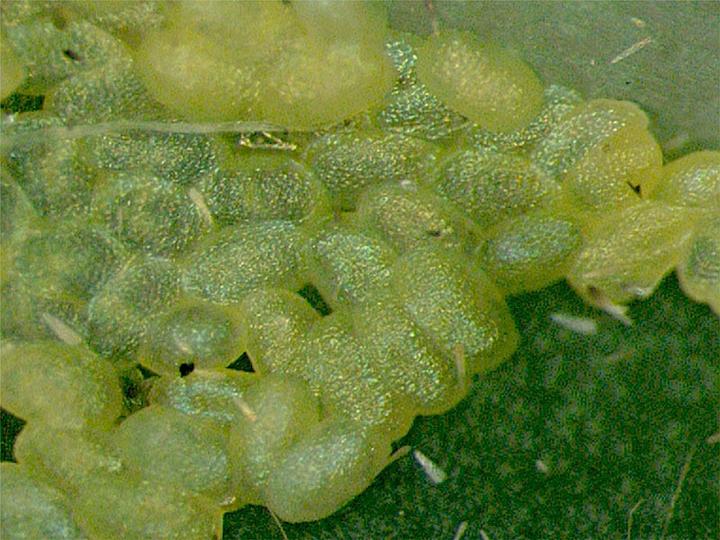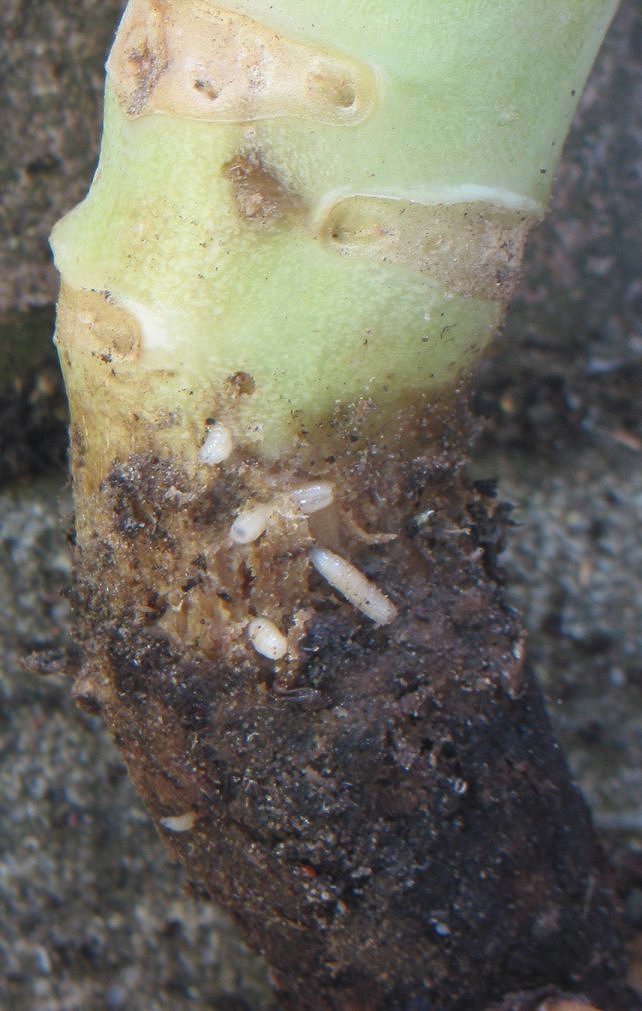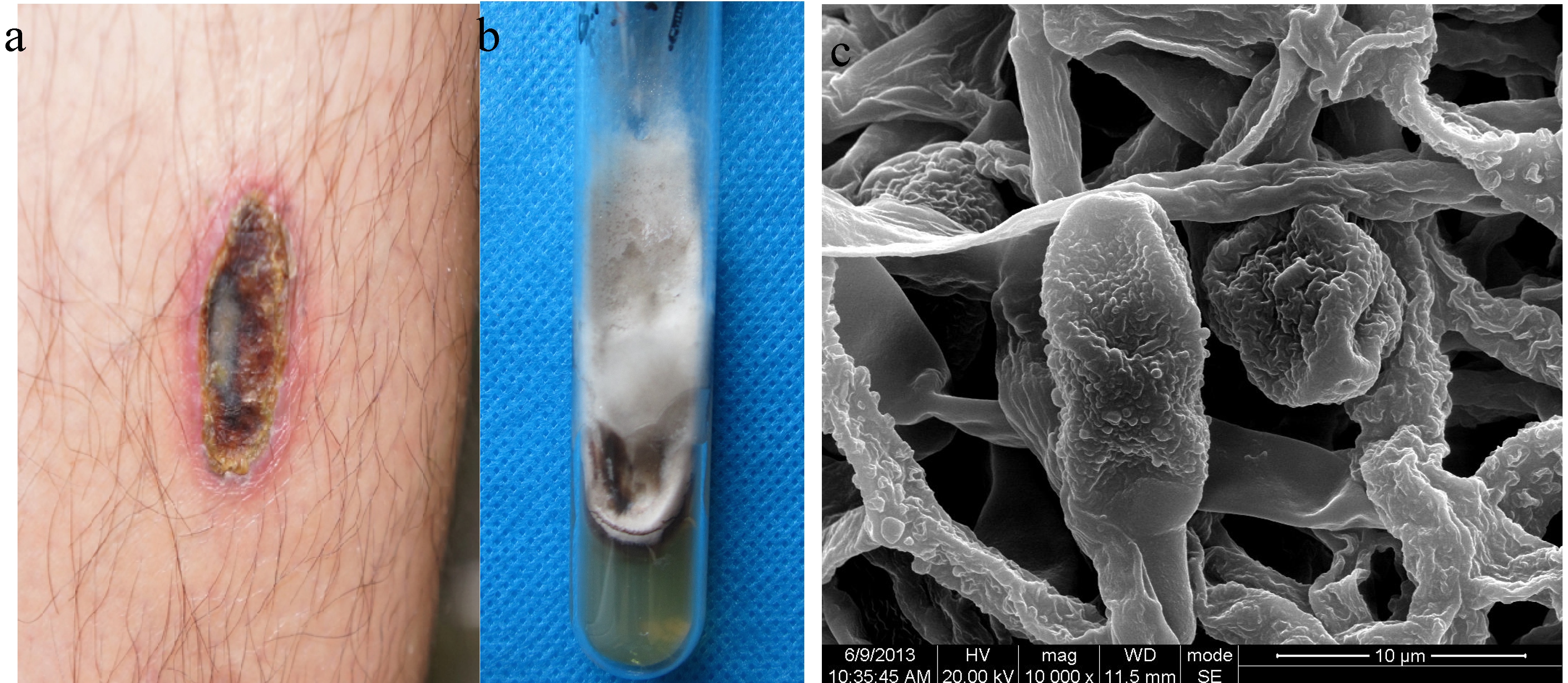|
Streptanthus Polygaloides
''Streptanthus polygaloides'' is a species of flowering plant in the mustard family known by the common name milkwort jewelflower. It is endemic to the Sierra Nevada foothills of California, where it grows in woodlands and chaparral, generally on serpentine soils. Description ''Streptanthus polygaloides'' is quite variable in morphology. In general, it is an annual herb producing a hairless, sometimes waxy-textured stem under 10 centimeters to nearly one meter tall. The ephemeral basal leaves have blades divided into narrow segments and borne on petioles. Leaves higher on the stem have simple, linear blades up to 10 centimeters long which lack petioles. Flowers occur at intervals along the upper stem. Each has a folded, hooded, calyx of deeply keeled sepals in shades of greenish yellow to purple. Brown-veined white petals emerge from the tip. The fruit is a smooth, straight, flat or four-angled silique up to 5 centimeters in length. Hyperaccumulator of nickel The ''Streptanthu ... [...More Info...] [...Related Items...] OR: [Wikipedia] [Google] [Baidu] |
Melanotrichus Boydi
''Melanotrichus boydi'' (syn. ''Orthotylus boydi'') is a species of plant bug in the family Miridae. It is notable as the only insect that is known to feed exclusively on a plant which hyperaccumulates nickel, specifically the milkwort jewelflower ''Streptanthus polygaloides''. In turn nickel accumulates in the cell tissues of ''M. boydi'' offering it partial protection from predators in its environment. Nickel effects in the ''M. boydi'' food chain ''S. polygaloides'' hyperaccumulates nickel in its leaves as an adaptation to living on serpentine soils which are high in nickel content (high concentrations of nickel typically impairs the growth of plants). This excess metal is of some benefit to the plant as it makes it toxic to many generalist insect herbivores as well as various pathogens. However ''M. boydi'' not only tolerates the high nickel concentration in the leaves of ''S. polygaloides'' but feeds exclusively on this plant at both larval and adult stages. As a resu ... [...More Info...] [...Related Items...] OR: [Wikipedia] [Google] [Baidu] |
Asa Gray
Asa Gray (November 18, 1810 – January 30, 1888) is considered the most important American botanist of the 19th century. His '' Darwiniana'' was considered an important explanation of how religion and science were not necessarily mutually exclusive. Gray was adamant that a genetic connection must exist between all members of a species. He was also strongly opposed to the ideas of hybridization within one generation and special creation in the sense of its not allowing for evolution. He was a strong supporter of Darwin, although Gray's theistic evolution was guided by a Creator. As a professor of botany at Harvard University for several decades, Gray regularly visited, and corresponded with, many of the leading natural scientists of the era, including Charles Darwin, who held great regard for him. Gray made several trips to Europe to collaborate with leading European scientists of the era, as well as trips to the southern and western United States. He also built an extensive ... [...More Info...] [...Related Items...] OR: [Wikipedia] [Google] [Baidu] |
Erysiphe Betae
''Erysiphe betae'' is a plant pathogen. It is a form of powdery mildew that can affect crops of sugar beet, when it can cause up to a 30% yield loss.Heffer, V., M. L. Powelson, K. B. Johnson, and N. Shishkoff. "Identification of Powdery Mildew Fungi anno 2006." Identification of Powdery Mildew Fungi. APS, 2006. Web. 14 Nov. 2016. The fungus occurs worldwide in all regions where sugar beet is grown and it also infects other edible crops, e.g. beetroot The beetroot is the taproot portion of a beet plant, usually known in North America as beets while the vegetable is referred to as beetroot in British English, and also known as the table beet, garden beet, red beet, dinner beet or golden beet .... Identification This pathogen is a strict obligated parasite, and therefore can only be identified when ''in planta''. Often to properly identify this pathogen, some form of microscopic analysis is needed when it is only found on one type of plant. This can be done through isolation a ... [...More Info...] [...Related Items...] OR: [Wikipedia] [Google] [Baidu] |
Endemic Flora Of California
Endemism is the state of a species being found in a single defined geographic location, such as an island, state, nation, country or other defined zone; organisms that are indigenous to a place are not endemic to it if they are also found elsewhere. For example, the Cape sugarbird is found exclusively in southwestern South Africa and is therefore said to be ''endemic'' to that particular part of the world. An endemic species can be also be referred to as an ''endemism'' or in scientific literature as an ''endemite''. For example ''Cytisus aeolicus'' is an endemite of the Italian flora. ''Adzharia renschi'' was once believed to be an endemite of the Caucasus, but it was later discovered to be a non-indigenous species from South America belonging to a different genus. The extreme opposite of an endemic species is one with a cosmopolitan distribution, having a global or widespread range. A rare alternative term for a species that is endemic is "precinctive", which applies to s ... [...More Info...] [...Related Items...] OR: [Wikipedia] [Google] [Baidu] |
Streptanthus
''Streptanthus'' is a genus of plants within the family Brassicaceae. There are about 35 known species within the genus ''Streptanthus'', distributed mostly throughout western North America. The common names for this genus are twistflower and jewelflower. Twenty-four of the species and eleven lesser taxa occur in California, thirty-two of which are California endemics; seventeen of these California taxa are classified as rare plants. Species or subspecies The following are some of the species (or subspecies) of the genus ''Streptanthus'' (county locations are not intended to be exhaustive): *''Streptanthus albidus'', Metcalf Canyon jewelflower **''Streptanthus albidus albidus'', Metcalf Canyon jewelflower (Santa Clara County, California), endangered **''Streptanthus albidus peramoenus'', Uncommon jewelflower, most beautiful jewelflower (Santa Clara County, California) *'' Streptanthus barbatus'', Pacific jewelflower *'' Streptanthus barbiger'', Bearded jewelflower *''Streptanthu ... [...More Info...] [...Related Items...] OR: [Wikipedia] [Google] [Baidu] |
Phytoremediation
Phytoremediation technologies use living plants to clean up soil, air and water contaminated with hazardous contaminants. It is defined as "the use of green plants and the associated microorganisms, along with proper soil amendments and agronomic techniques to either contain, remove or render toxic environmental contaminants harmless". The term is an amalgam of the Greek ''phyto'' (plant) and Latin ''remedium'' (restoring balance). Although attractive for its cost, phytoremediation has not been demonstrated to redress any significant environmental challenge to the extent that contaminated space has been reclaimed. Phytoremediation is proposed as a cost-effective plant-based approach of environmental remediation that takes advantage of the ability of plants to concentrate elements and compounds from the environment and to detoxify various compounds. The concentrating effect results from the ability of certain plants called hyperaccumulators to bioaccumulate chemicals. The remedia ... [...More Info...] [...Related Items...] OR: [Wikipedia] [Google] [Baidu] |
Miridae
The Miridae are a large and diverse insect family at one time known by the taxonomic synonym Capsidae. Species in the family may be referred to as capsid bugs or "mirid bugs". Common names include plant bugs, leaf bugs, and grass bugs. It is the largest family of true bugs belonging to the suborder Heteroptera; it includes over 10,000 known species, and new ones are being described constantly. Most widely known mirids are species that are notorious agricultural pests that pierce plant tissues, feed on the sap, and sometimes transmit viral plant diseases. Some species however, are predatory. Description Miridae are small, terrestrial insects, usually oval-shaped or elongate and measuring less than in length. Many of them have a hunched look, because of the shape of the prothorax, which carries the head bent down. Some are brightly coloured and attractively patterned, others drab or dark, most being inconspicuous. Some genera are ant mimics at certain stages of life. The Mi ... [...More Info...] [...Related Items...] OR: [Wikipedia] [Google] [Baidu] |
Diamondback Moth
The diamondback moth (''Plutella xylostella''), sometimes called the cabbage moth, is a moth species of the family Plutellidae and genus ''Plutella''. The small, grayish-brown moth sometimes has a cream-colored band that forms a diamond along its back. The species may have originated in Europe, South Africa, or the Mediterranean region, but it has now spread worldwide. The moth has a short life cycle (14 days at 25 °C), is highly fecund, and is capable of migrating long distances. Diamondback moths are considered pests as they feed on the leaves of cruciferous crops and plants that produce glucosinolates. However, not all of these plants are equally useful as hosts to the moth. Because of this, studies have suggested using wintercress as a trap crop around agricultural fields because diamondback moths are highly attracted to that plant but their larvae fail to survive when eggs are laid on it. Originally, pesticides were used to kill the moths but diamondbacks have deve ... [...More Info...] [...Related Items...] OR: [Wikipedia] [Google] [Baidu] |
Delia Radicum
''Delia radicum'', known variously as the cabbage fly, cabbage root fly, root fly or turnip fly, is a pest of crops. The larvae of the cabbage root fly are sometimes known as the cabbage maggot or root maggot. The adult flies are about 1 cm long and are grey in colour, but otherwise resemble the common house fly. The flies can be found all over Europe. After overwintering as pupae in the soil, the flies emerge in spring, feed on nectar, and lay eggs close to plants of the genus ''Brassica''. The eggs are white and about 1 mm in diameter. They hatch into white maggots after about six days and the larva A larva (; plural larvae ) is a distinct juvenile form many animals undergo before metamorphosis into adults. Animals with indirect development such as insects, amphibians, or cnidarians typically have a larval phase of their life cycle. Th ...e feed for about three weeks on the roots and stems of the cabbage plants. After this, the larvae are typically 0.9 to 1 ... [...More Info...] [...Related Items...] OR: [Wikipedia] [Google] [Baidu] |
Evergestis Rimosalis
''Evergestis rimosalis'', the cross-striped cabbageworm, is a moth of the family Crambidae. It is found in most of the eastern United States. The wingspan is about 25 mm. The forewings are light brownish-grey with dark grey patches. The hindwings are white with dark grey apical shading and a dark discal spot The larvae feed on various Brassicaceae Brassicaceae () or (the older) Cruciferae () is a medium-sized and economically important family of flowering plants commonly known as the mustards, the crucifers, or the cabbage family. Most are herbaceous plants, while some are shrubs. The l ... species, including cabbage, collard greens and Brussels sprouts. Gallery Image:Evergestis rimosalis larva.jpg, Larva Image:Evergestis_rimosalis_larva1.jpg, Larva References Moths described in 1854 Evergestis Moths of North America {{Glaphyriinae-stub ... [...More Info...] [...Related Items...] OR: [Wikipedia] [Google] [Baidu] |
Melanoplus Femurrubrum
''Melanoplus femurrubrum'', the red-legged grasshopper, is a species of grasshopper belonging to the genus ''Melanoplus''. It is one of the most common grasshoppers found in Mexico, the United States, and Canada. This grasshopper is frequently used as a model organism in scientific studies, due to their abundance throughout North America and behavioral response to changes in climate. Identification ''Melanoplus femurrubrum'' is a medium-sized grasshopper, in which males can range in length from - , whereas females can range from - long. This grasshopper has a reddish-brown back, a greenish-yellow belly, and red hind tibiae, hence its specific name ''femurrubrum'' (''femur'' = thigh, ''rubrum'' = red). Wings of ''M. femurrubrum'' typically extend beyond the tip of the abdomen. Males have an enlarged abdomen, with a U-shaped sub-genital plate. Habitat ''Melanoplus femurrubrum'' can be found in a variety of habitats found throughout most of North America, but prefer grassl ... [...More Info...] [...Related Items...] OR: [Wikipedia] [Google] [Baidu] |
Alternaria Brassicola
''Alternaria'' is a genus of Deuteromycetes fungi. All species are known as major plant pathogens. They are also common allergens in humans, growing indoors and causing hay fever or hypersensitivity reactions that sometimes lead to asthma. They are present in the human mycobiome and readily cause opportunistic infections in immunocompromised people such as AIDS patients. There are 299 species in the genus; they are ubiquitous in the environment and are a natural part of fungal flora almost everywhere. They are normal agents of decay and decomposition. The spores are airborne and found in the soil and water, as well as indoors and on objects. The club-shaped spores are single or form long chains. They can grow thick colonies which are usually green, black, or gray. At least 20% of agricultural spoilage is caused by ''Alternaria'' species, with the most severe losses reaching 80% of yield. Many human health disorders can be caused by these fungi, which grow on skin and mucous mem ... [...More Info...] [...Related Items...] OR: [Wikipedia] [Google] [Baidu] |
.jpg)
.jpg)
.jpg)



